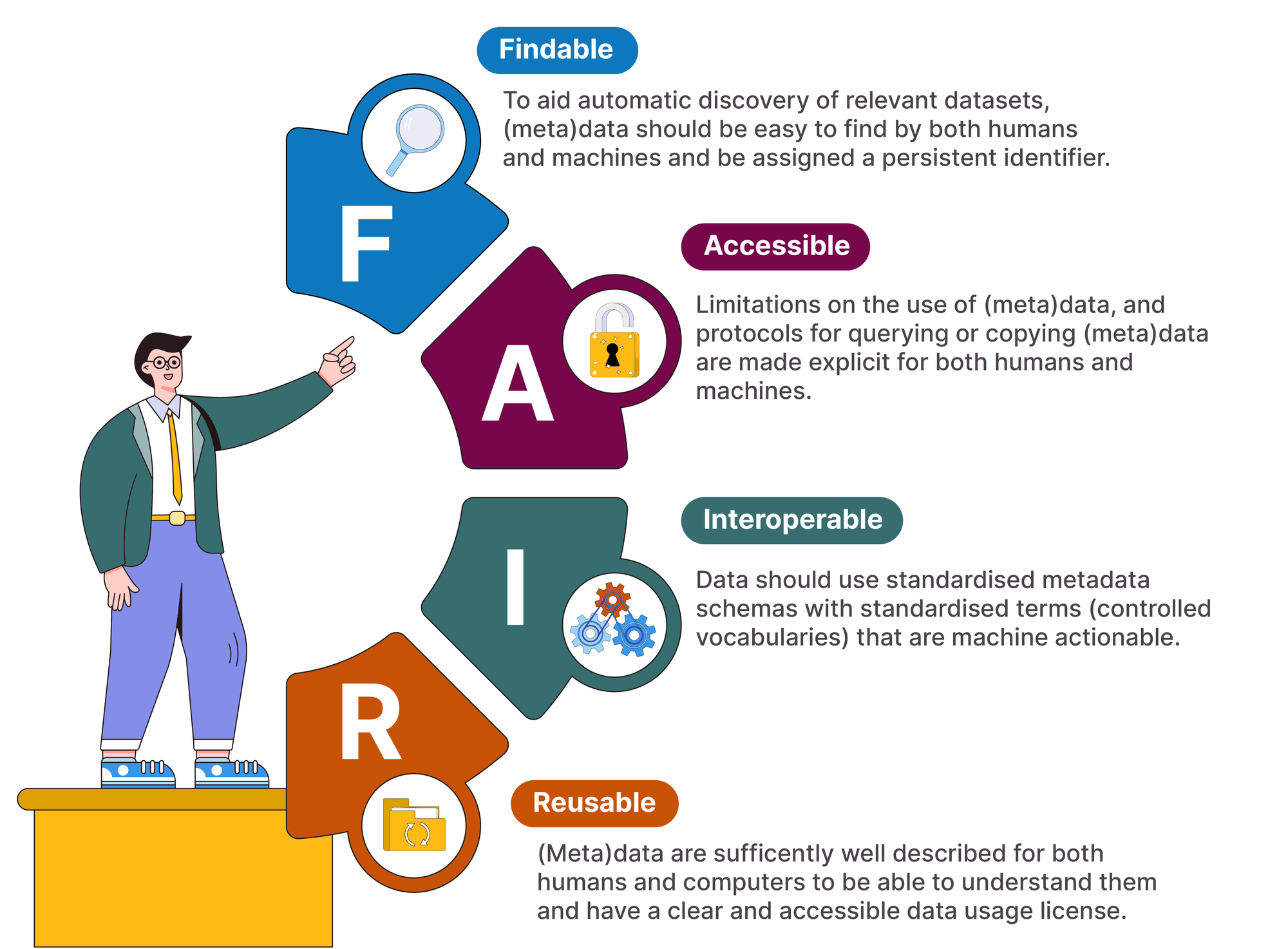Chapter 5: FAIR-enabling and Trustworthy Qualities of Data Archives

Introduction
The fifth chapter of the DAG focuses on the “FAIR-enabling and Trustworthy Qualities of Archives”. In this chapter, you will be re-introduced to the FAIR principles and the concept of trustworthiness, and how these qualities are reflected within data archives via policies, technology, internal training, and dissemination.
The chapter begins with introducing the topic of FAIR and its history, and detailing what a FAIR-enabling organisation can look like. The origin of the FAIR acronym is an amalgamation of various established archival processes and principles. The aim of using FAIR - “Findable, Accessible, Interoperable, and Reusable” - is to define a common goal for good data management: simple and to the point. There are a variety of ways to enable FAIR in your organisation and to your designated community of users, such as through training, policies, and outreach, with examples provided within this chapter.
Trustworthiness is another important quality to showcase in your archive, to demonstrate to your designated community that you are a reliable and capable service provider to care for data. This chapter also details what trustworthiness entails and how data archives can showcase this through certification. Good practices and helpful resources are presented from within the CESSDA community. The chapter also contains more expert tips and questions to ask your own archive to learn more about these topics.